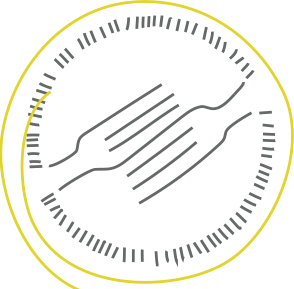Roadmap for Change
One of the most fascinating aspects of my one on one work is spending time learning about people and how experiences from childhood forward directly shaped their relationship with food. Whether good or bad, these experiences are our foundation of behaviors and habits and almost always serve as a roadmap for food lifestyle change. When with a client, yes we discuss health history and family health history; I cover exercise habits and diet recall (daily munchies) but central to each and every conversation are a set of questions that give me the tools to really help:
- Where did you grow up
- What did you typically have for breakfast, lunch and dinner
- Who prepared your meals
- Was the food you ate fresh or packaged (out of a can or box)
- Did the food taste good
- Did you have family meals and were they enjoyable
- Would you describe your eating as healthy
- How did your eating change when you moved away from home
- Was food ever used as punishment or reward
- What is your favorite food related experience
- What is your most horrible food related experience
- What are your favorite foods today
(Think about this for yourself; it’s actually a fun and informative exercise)
Every answer (or series of answers) provides a deep level of insight into a person’s intimate relationship with eats. Many years ago I worked with a girl in her 20’s. Let’s call her Lila. Her impetus for reaching out was a recent autoimmune diagnosis and exhausting all healing options, she turned to food. Yeah Lila!
Now, a little about Lila and how her experiences from childhood shaped deeply ingrained behaviors and habits that were NOT serving her well (and needed shifting). I met her in her shared apartment in downtown New York City. Her home was sparse and the kitchen was bare other than a block of cheese and some coffee in her fridge. I asked her all of the questions above and here were the answers:
- She grew up in a wealthy suburb of Washington, D.C. with a high level of access to healthy food.
- She typically ate a sugared cereal for breakfast; school lunch that amounted to pizza and milk; and dinner was either a hot dog or peanut butter and jelly sandwich.
- She prepared her own “meals” for her parents were too pre-occupied (and her nanny didn’t know how to cook)
- Rarely did she ever have fresh food
- She remembered always being hungry so any food tasted good to her
- There were no family meals—she would often make dinner for her and her sister
- As she matured, she realized that her eating was unhealthy but didn’t know how to shift if
- When she moved away from home, she started to discover what real fresh food was
- While food was never used as punishment or reward per se, she watched her mother diet on a regular basis
- She couldn’t recall a favorite food experience
- Her most horrible one was the taste of hot dogs
- She has no idea what her favorite foods were; but she knew she wanted to like and eat fresh whole foods
As a professional, I can tell you that Lila was never given the opportunity to form a healthy relationship with food. It’s quite sad as evidenced above. And if it weren’t for her recent diagnosis, perhaps she never would have sought another way. So we had our work cut out for us.
Now, the way I practice “food therapy” is by taking my clients food shopping, cooking with them and eating with them (also offering many other food tools like daily menus and resources). Learning by doing is the way to go! And believe it or not, this seemingly simple process has been shifting the incredible people I work with for many years now.
But my point here is that when it comes to shifting a person’s relationship with food it’s like treating any illness—you have to find the root cause for the most effective and sustainable “treatment” plan. And most always part of the story can be found in how deeply ingrained behaviors and habits were formed.
So I encourage all of you to answer the questions above and start to gain some clear insight into your relationship with food—for better or for worse—cause that will be your roadmap for change.
Lila and I worked together over the course of a few months. By the end of our work, Lila’s fridge was packed with fresh whole foods, she was cooking and she was eating—truly nourishing herself thus setting the stage for emotional and physical healing.
While you can’t control the deck you are dealt, the universe can be yours if you do something about it!
Let’s keep this conversation going. Please feel free to share your thoughts and opinions. I would love to hear from you!

